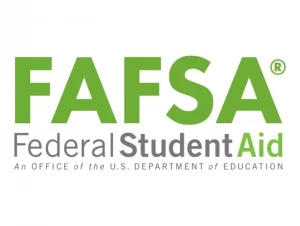Iowa colleges see lower federal student aid completion rates
July 5th, 2024 by Ric Hanson
(Des Moines, Iowa) – As Iowa colleges and universities receive the last of the federal student aid applications for the upcoming school year, financial aid officials are seeing fewer students submit their documents and changes in how much those who do file receive. The Iowa Capital Dispatch reports Iowa’s completion rate of the Free Application for Federal Student Aid (FAFSA) is on par with the national average, but for individual colleges those numbers are more extreme. Almost 1.9 million students had filed the FAFSA by June 21, according to the National College Attainment Network, or just over 45% of the total high school class of 2024. This is an 11.8% drop from 2023. Iowa is firmly in the middle of the pack for rates of FAFSA completion, according to the network, with 43.8% of high school seniors having submitted the form by June 21. The rate of completion dropped by 11.7% from last year, or from 18,493 submitted applications to 16,039.
At Luther College in Decorah, financial aid director Rachel Moser said rates of first-year students submitting FAFSAs is 18% behind where it was this time last year, and there’s been a decrease of 15% in continuing students’ FAFSA submissions as well. Just days before the Iowa FAFSA deadline hit on July 1, Moser said the financial aid department was trying to contact people and encourage them to get their forms filed. Drake University Financial Aid Director Ryan Zantingh said his staff was also reaching out to students ahead of the deadline, especially those who might qualify for the Iowa Tuition Grant.
In June 2023, Drake had admitted 4,508 students. Despite seeing an increase in admitted students by more than 1,000 by mid-June this year, which Zantingh said is among the university’s largest-ever admitted student populations, Drake has received 237 fewer FAFSAs from admitted students compared to last year. These admission numbers exclude international students, who do not fill out the FAFSA. He said that in total, the filing rate for admitted students is down around 15% compared to previous years. 
The new FAFSA has given both families and universities grief since its soft launch at the end of 2023, two months later than it rolled out in previous years. Students struggled with accessing the form early on and trying to understand sometimes confusing language and changes to the aid formula and what they needed to include for accurate calculations. Glitches and inaccurate data caused delays in getting forms to schools, many of which then had to be sent back to be corrected.
Colleges are still seeing bugs in the system and cannot make batch corrections on FAFSA forms, slowing down the process to get students accurate financial aid information even more. Changes were also made to the FAFSA to exclude the number of additional family members in college and to include the value of family farms and businesses as assets, impacting the aid some continuing students have been receiving.
Analysis from Iowa College Aid projected that the number of students eligible for Iowa Tuition Grants would increase by a net 2%, with the number becoming eligible going up by 8% and the number no longer eligible going up by 6%. Most of the students losing eligibility could attribute that to no longer being able to consider other family members in college.
Financial aid officials say they’re hoping for a smoother time next FAFSA cycle. They expect the form to be out earlier, as Federal Student Aid is committed to having it out on Oct. 1st.





